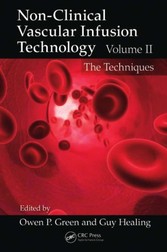Suchen und Finden

Non-Clinical Vascular Infusion Technology, Volume II - The Techniques
Intravenous infusion is a necessary mode of delivery for many pharmaceuticals currently on the market or undergoing clinical trials. The technique of prolonged intravenous delivery in conscious, free-moving animal models has broadened the opportunity to study and evaluate the safety and efficacy of these therapeutic products. With contributions from an international selection of authors who are leaders in commercial infusion technology, Non-Clinical Vascular Infusion Technology, Volume II: The Techniques provides a current account of the techniques involved in all the major laboratory animal species for conducting successful vascular infusion studies with xenobiotics.Following in the footsteps of the highly praised Handbook of Pre-Clinical Continuous Intravenous Infusion, this new volume covers both up-to-date procedures and equipment. It is organized by species, including all those commonly used in pre-clinical studies: rat, mouse, dog, minipig, large primate, and marmoset. There are also chapters on juvenile studies and reproductive toxicity studies. Each section addresses the selection of the best model, surgical and non-surgical best practices, practical techniques, equipment selection, and commonly encountered background pathologies.Using a fresh approach, the authors identify best practices to be shared across the industry, and provide guidance on choices for the most acceptable methodologies from an animal welfare perspective. This volume, along with Volume I: The Science, provides a foundation of knowledge on infusion technology and its importance for safe clinical use of substances via this route of delivery. Features:Emphasizes best practices in accordance with the 3Rs-reduction, refinement, and replacement of animal usage in laboratoriesPresents step-by-step procedures and practical tips covering a wide range of common animal models, augmented by the liberal use of illustrationsCovers modern practices and procedures in accordance with up-to-date equipment development
Alle Preise verstehen sich inklusive der gesetzlichen MwSt.









